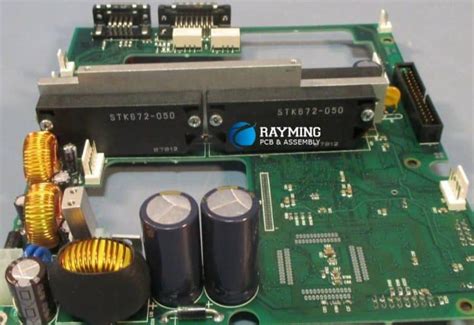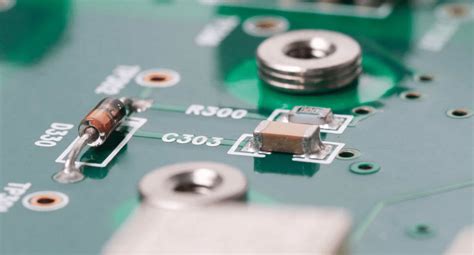Flex cut hotswap pcb
Exploring the Benefits of Flex Cut Hotswap PCBs for Custom Keyboards
In the realm of custom mechanical keyboards, enthusiasts are constantly seeking innovations that enhance both functionality and user experience. One such advancement that has garnered significant attention is the flex cut hotswap printed circuit board (PCB). This technology represents a fusion of flexibility and convenience, offering a myriad of benefits that cater to both novice builders and seasoned keyboard aficionados alike.
To begin with, the concept of a hotswap PCB is revolutionary in itself.
Traditional mechanical keyboards require soldering to attach switches to the PCB, a process that can be daunting for beginners and time-consuming for experienced builders. Hotswap PCBs eliminate this hurdle by allowing switches to be easily inserted and removed without soldering. This feature not only simplifies the assembly process but also provides the flexibility to experiment with different switch types, enabling users to customize their typing experience with ease. Consequently, hotswap PCBs have become a popular choice for those who value versatility and convenience in their keyboard builds.
Building upon the advantages of hotswap technology, the introduction of flex cut designs further elevates the user experience.
Flex cuts are strategically placed incisions on the PCB that enhance its flexibility, allowing for a more cushioned typing feel. This design innovation addresses a common desire among keyboard enthusiasts for a softer, more comfortable typing experience, which can reduce fatigue during extended use. By incorporating flex cuts, manufacturers can offer a typing experience that closely mimics the feel of a gasket-mounted keyboard, a feature highly sought after for its ability to absorb keystroke impact and provide a quieter typing environment.
Moreover, the integration of flex cut hotswap PCBs into custom keyboards opens up new possibilities for personalization.
Enthusiasts can now fine-tune the typing feel by experimenting with different plate materials and switch types, all while enjoying the benefits of a softer typing experience. This level of customization is particularly appealing to those who view their keyboards as an extension of their personal style and preferences. Additionally, the ability to easily swap out switches without the need for soldering encourages users to explore a wider range of switch options, from tactile to linear to clicky, further enhancing the keyboard’s adaptability to individual needs.
Furthermore, the durability and longevity of flex cut hotswap PCBs are noteworthy.
The absence of soldering reduces the risk of damage to the PCB during switch changes, thereby extending the lifespan of the keyboard. This durability is complemented by the robust design of the flex cuts, which are engineered to withstand repeated use without compromising the structural integrity of the PCB. As a result, users can enjoy a reliable and long-lasting keyboard that adapts to their evolving preferences over time.
In conclusion, the advent of flex cut hotswap PCBs represents a significant leap forward in the world of custom mechanical keyboards. By combining the convenience of hotswap technology with the enhanced typing feel provided by flex cuts, this innovation offers a compelling solution for those seeking a customizable, comfortable, and durable keyboard experience. As the popularity of custom keyboards continues to rise, it is likely that flex cut hotswap PCBs will play an increasingly prominent role in shaping the future of keyboard design and functionality.
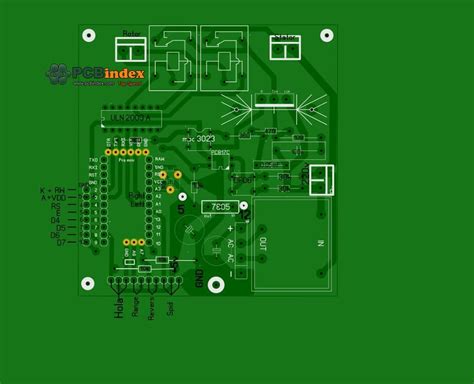
How to Install and Maintain a Flex Cut Hotswap PCB in Your Keyboard
Installing and maintaining a flex cut hotswap PCB in your keyboard can significantly enhance your typing experience by offering flexibility and ease of customization. This innovative technology allows users to change switches without soldering, making it an attractive option for both beginners and seasoned keyboard enthusiasts. To begin with, understanding the installation process is crucial. Start by gathering the necessary tools and components, including the flex cut hotswap PCB, a compatible keyboard case, switches, keycaps, and a screwdriver. It is advisable to work on a clean, flat surface to prevent any damage to the components.
First, disassemble your keyboard by removing the keycaps and unscrewing the case.
Carefully take out the existing PCB if you are replacing it. Next, align the flex cut hotswap PCB with the mounting points in your keyboard case. Ensure that the PCB is properly seated and that the USB port aligns with the case opening. This step is vital to avoid any connectivity issues later on. Once aligned, secure the PCB using the screws provided, taking care not to overtighten them, as this could damage the board.
With the PCB in place, proceed to install the switches.
The hotswap sockets on the PCB allow you to simply push the switches into place without the need for soldering. It is important to ensure that each switch is fully inserted and sits flush with the PCB to guarantee proper functionality. As you install the switches, periodically test them by connecting the PCB to your computer and using a keyboard testing software to confirm that each switch is registering correctly.
After all the switches are installed and tested, the next step is to attach the keycaps.
This process is straightforward; however, it is essential to ensure that each keycap is aligned correctly with its corresponding switch stem to prevent any damage. Once the keycaps are in place, reassemble the keyboard case by carefully screwing it back together. At this point, your keyboard should be fully functional with the new flex cut hotswap PCB installed.
Maintaining your flex cut hotswap PCB is equally important to ensure its longevity and optimal performance.
Regular cleaning is recommended to prevent dust and debris from accumulating on the PCB and switches. Use a soft brush or compressed air to gently remove any particles. Additionally, periodically check the hotswap sockets for any signs of wear or damage, as these are critical to the functionality of the PCB.
Moreover, it is advisable to update the firmware of your PCB if updates are available.
Manufacturers often release firmware updates to improve performance or add new features. Follow the manufacturer’s instructions for updating the firmware, ensuring that you back up any custom settings beforehand.
In conclusion, installing and maintaining a flex cut hotswap PCB in your keyboard is a rewarding endeavor that offers enhanced customization and ease of use. By following the outlined steps and taking care of your PCB, you can enjoy a versatile and reliable keyboard setup. Whether you are a casual user or a keyboard enthusiast, the flexibility and convenience of a hotswap PCB make it a worthwhile investment.
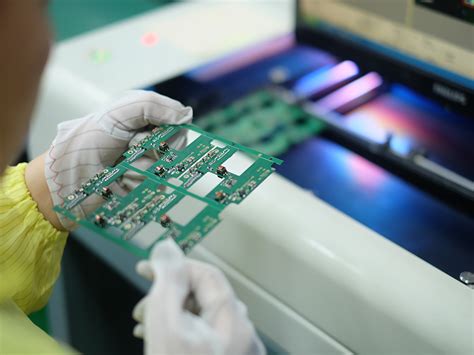
Comparing Flex Cut Hotswap PCBs with Traditional Soldered PCBs
In the realm of mechanical keyboards, the choice between flex cut hotswap PCBs and traditional soldered PCBs has become a pivotal decision for enthusiasts and professionals alike. Understanding the nuances of each option is essential for making an informed choice that aligns with one’s preferences and requirements. Flex cut hotswap PCBs have gained popularity due to their convenience and adaptability, while traditional soldered PCBs are often lauded for their stability and reliability. By examining the characteristics of each, one can better appreciate the advantages and potential drawbacks inherent in these technologies.
Flex cut hotswap PCBs are designed to allow users to easily swap out switches without the need for soldering.
This feature is particularly appealing to those who frequently modify their keyboards or wish to experiment with different switch types. The flexibility offered by hotswap PCBs means that users can customize their typing experience with minimal effort, making it an attractive option for both beginners and seasoned keyboard enthusiasts. Moreover, the ability to change switches without soldering reduces the risk of damaging the PCB, thereby extending the lifespan of the keyboard.
In contrast, traditional soldered PCBs require a more permanent commitment to the chosen switches, as they are soldered directly onto the board.
This method, while less flexible, offers a level of stability that hotswap PCBs may not always provide. Soldered connections are known for their durability and reliability, ensuring that switches remain securely in place even with extensive use. For users who prioritize a steadfast typing experience and do not anticipate frequent changes to their keyboard setup, soldered PCBs may be the preferred choice.
Transitioning from the technical aspects to the user experience, it is important to consider the tactile and auditory feedback provided by each type of PCB.
Flex cut hotswap PCBs often incorporate a design that allows for a more flexible typing feel, which can enhance comfort during prolonged use. This flexibility can also contribute to a more dynamic sound profile, which some users find appealing. On the other hand, traditional soldered PCBs typically offer a more consistent and firm typing experience, which can be advantageous for those who prefer a stable and predictable feel.
Furthermore, the installation process for each type of PCB varies significantly.
Hotswap PCBs simplify the assembly process, as they eliminate the need for soldering skills and equipment. This ease of use can be particularly beneficial for newcomers to the mechanical keyboard hobby, as it lowers the barrier to entry. Conversely, soldered PCBs require a more involved assembly process, necessitating a certain level of expertise and precision. However, for those who enjoy the craftsmanship involved in building a keyboard from scratch, this process can be a rewarding endeavor.
In conclusion, the decision between flex cut hotswap PCBs and traditional soldered PCBs ultimately hinges on individual preferences and priorities. While hotswap PCBs offer unparalleled convenience and adaptability, soldered PCBs provide unmatched stability and reliability. By weighing the benefits and limitations of each, users can select the option that best suits their needs, whether they seek the freedom to experiment or the assurance of a steadfast typing experience. As the mechanical keyboard community continues to evolve, both technologies will undoubtedly play a significant role in shaping the future of keyboard customization.
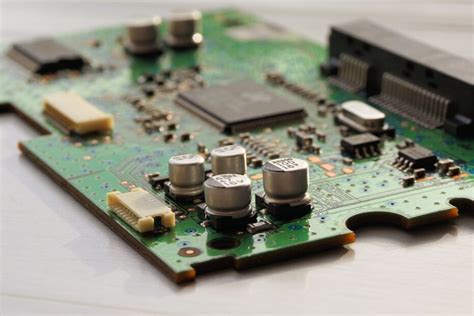
Top Flex Cut Hotswap PCB Models for Enthusiast Keyboard Builders
In the realm of custom mechanical keyboards, the pursuit of the perfect typing experience is a journey that many enthusiasts embark upon with great passion. Among the myriad of components that contribute to this experience, the printed circuit board (PCB) plays a pivotal role. For those who seek versatility and ease of customization, flex cut hotswap PCBs have emerged as a popular choice. These innovative PCBs offer a unique combination of flexibility and convenience, making them highly sought after by keyboard builders. As we delve into the top flex cut hotswap PCB models available, it is essential to understand what sets them apart and why they are favored by enthusiasts.
To begin with, flex cut hotswap PCBs are designed with strategic cuts or slits in the PCB material, allowing for a more flexible typing experience.
This design feature enhances the overall feel of the keyboard by providing a slight bounce or flex when typing, which can be particularly appealing for those who type for extended periods. Moreover, the hotswap capability of these PCBs allows users to easily change switches without the need for soldering, offering a level of convenience that is highly valued in the custom keyboard community. This combination of flexibility and hotswap functionality makes these PCBs an attractive option for both novice and experienced builders alike.
One of the standout models in this category is the KBDfans DZ60 RGB V2.
This PCB is renowned for its robust build quality and compatibility with a wide range of layouts, including ANSI and ISO. The flex cut design of the DZ60 RGB V2 provides a comfortable typing experience, while its hotswap sockets allow for effortless switch changes. Additionally, the inclusion of RGB lighting adds a customizable aesthetic element, further enhancing its appeal to enthusiasts who appreciate both form and function.
Another noteworthy model is the NovelKeys NK65 Entry Edition.
This PCB is particularly popular among those who are new to the world of custom keyboards, as it offers an accessible entry point without compromising on quality. The flex cut design of the NK65 Entry Edition ensures a pleasant typing experience, while its hotswap capability allows users to experiment with different switches to find their preferred feel. Furthermore, its compatibility with a variety of keycap profiles and stabilizers makes it a versatile choice for builders looking to create a personalized keyboard.
Transitioning to a more premium option, the Rama Works U80-A SEQ2 PCB stands out for its exceptional craftsmanship and attention to detail.
This PCB is designed for those who seek a high-end typing experience, with its flex cut design providing a refined level of comfort. The hotswap feature of the U80-A SEQ2 allows for seamless switch customization, catering to enthusiasts who desire both luxury and functionality in their builds. Additionally, the PCB’s compatibility with the Rama Works ecosystem ensures a cohesive and aesthetically pleasing final product.
In conclusion, flex cut hotswap PCBs offer a unique blend of flexibility and convenience that appeals to keyboard enthusiasts of all levels. Whether one is seeking an entry-level option like the NovelKeys NK65 Entry Edition or a premium choice such as the Rama Works U80-A SEQ2, these PCBs provide the foundation for a customizable and enjoyable typing experience. As the custom keyboard community continues to grow, the demand for innovative and versatile components like flex cut hotswap PCBs is likely to remain strong, driving further advancements in this exciting field.

